Types of Outdoor Paint
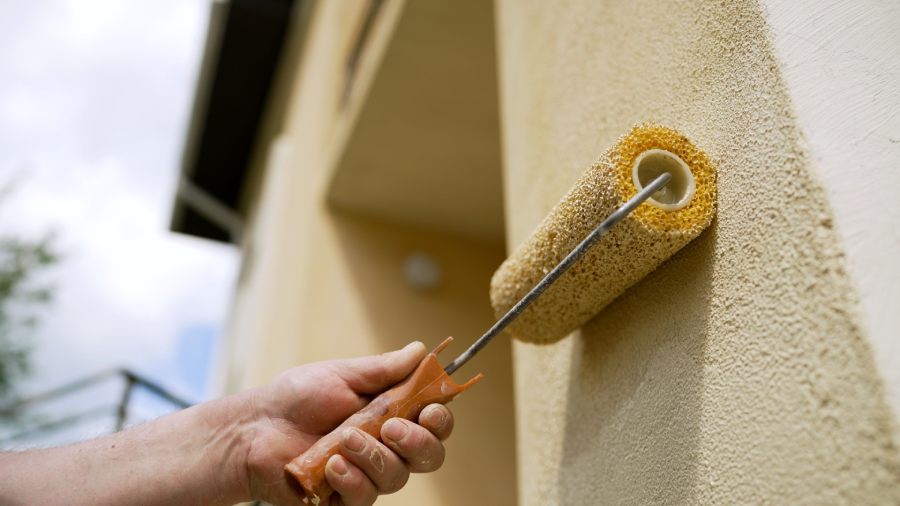
When it comes to sprucing up the exterior of your home or outdoor structures, choosing the right paint can make all the difference. The world of outdoor paint offers a diverse array of options, each designed to withstand the elements and provide lasting protection and beauty.
From the siding of your house to the deck in your backyard, different surfaces require specific types of outdoor paint to ensure durability and longevity. Understanding the various categories of outdoor paint available can help you make better decisions for your next project.
Whether you’re looking to refresh your home’s curb appeal or protect wooden structures from moisture, there’s a perfect outdoor paint solution waiting. It can even add a pop of color to your garden furniture.
With the right knowledge and tools, you can transform your outdoor spaces and create a lasting impression. Let’s explore exterior coatings and discover how to achieve professional-quality results in your outdoor painting projects.
Types of Outdoor Paint
Outdoor paint is specially formulated for exterior use, providing protection against harsh weather conditions and enhancing surface appearance. Key categories include water-based paints for easy application, oil-based paints for durability, and specialty paints for specific needs.
Important properties are durability, color retention, and breathability, while factors like surface type, climate, and application method guide selection. Innovations now feature low-VOC, eco-friendly options, smart paints with insulation properties, and self-cleaning formulations that reduce maintenance.
Consider unique material requirements when choosing outdoor paint for proper adhesion and longevity. Investing in high-quality paint can lead to better performance and a more attractive finish over time. Regular maintenance can prolong outdoor paint life, maintaining a fresh appearance.
1. Latex paint
Latex paint is a water-based paint commonly used for exterior walls and siding. It’s easy to apply and clean up, dries quickly, and is less likely to yellow over time. Latex paint offers several benefits. It resists cracking and peeling, allows moisture to escape, and is environmentally friendly with low VOC emissions. It comes in a wide range of colors and maintains its appearance well, even in bright sunlight.
However, there are some considerations when using latex paint. It may not adhere well to surfaces previously painted with oil-based paint and might not apply smoothly in colder temperatures. Latex paint is also less durable than some other types, which means you might need to reapply more often in high-traffic areas. Despite its limitations, latex paint remains a popular choice due to its ease of use and versatility.
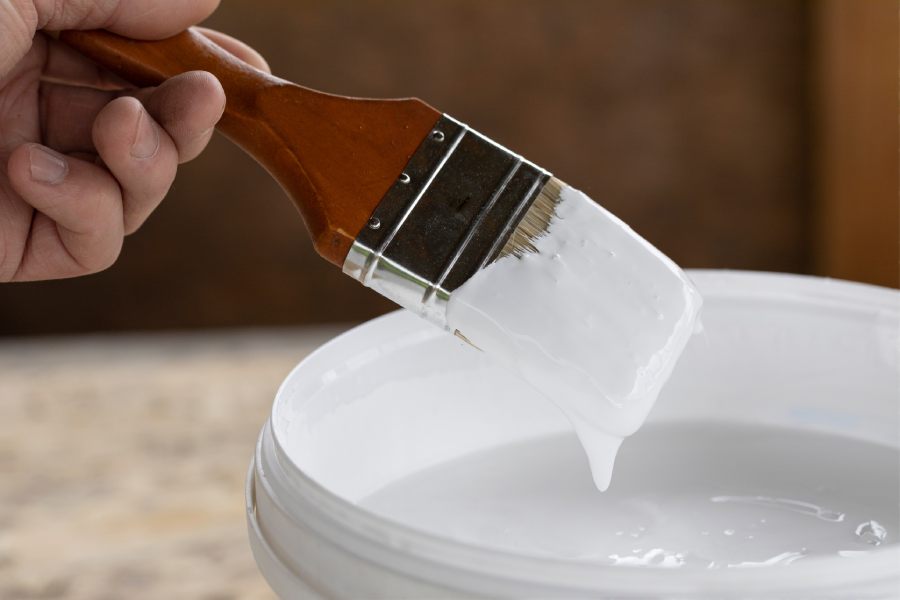
2. Oil-based paint
Oil-based paint uses mineral spirits as a base and is often used for trim, doors, and metal surfaces. It provides a smooth, durable finish and is known for its ability to level out brush strokes.
The benefits of oil-based paint include high durability, creating a hard protective shell when dry. It’s excellent for covering surface imperfections and adheres well to many materials. Oil-based paint is resistant to wear and tear, making it a good choice for frequently used areas.
However, there are some drawbacks to consider. Oil-based paint has a strong odor and high VOC emissions, takes longer to dry than latex paint, and can yellow over time, especially in areas with little sunlight. Cleanup also requires solvents, making it less convenient than water-based paints.
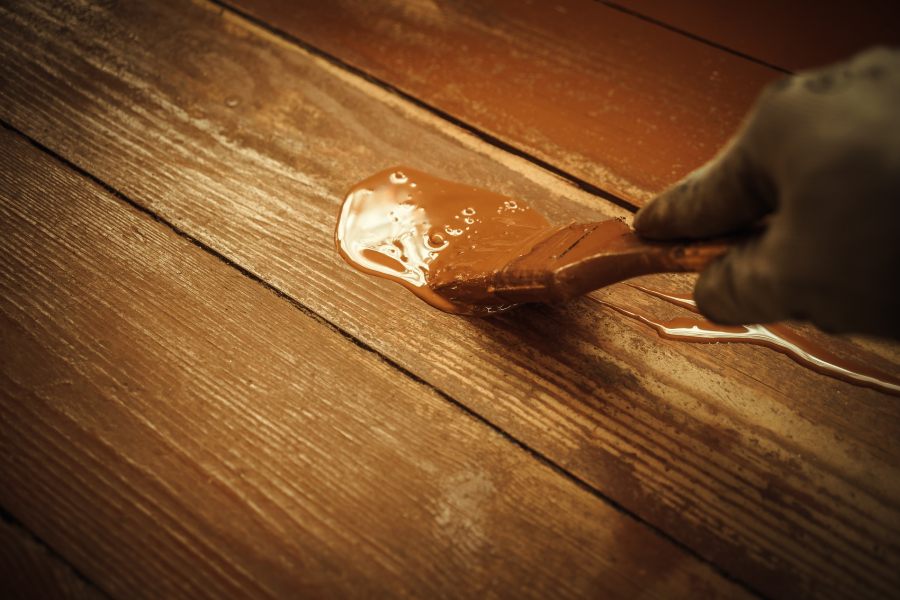
3. Acrylic paint
Acrylic paint is a fast-drying paint made with pigment suspended in acrylic polymer emulsion. It’s often used for exterior trim and doors, offering good coverage and durability.
Acrylic paint is versatile and can be used on various surfaces. Its benefits include quick drying time, resistance to UV rays and weather damage, and good color retention. It’s also flexible, reducing the risk of cracking, and adheres well to many surfaces, including wood and metal.
When considering acrylic paint, keep in mind that it can be more expensive than latex paint. In hot weather, it may dry too quickly, making it challenging to achieve a smooth finish. Acrylic paint may also not perform well in extreme cold, so it’s important to apply it in moderate temperatures. Overall, its durability and versatility make acrylic paint a favored choice for many outdoor applications.
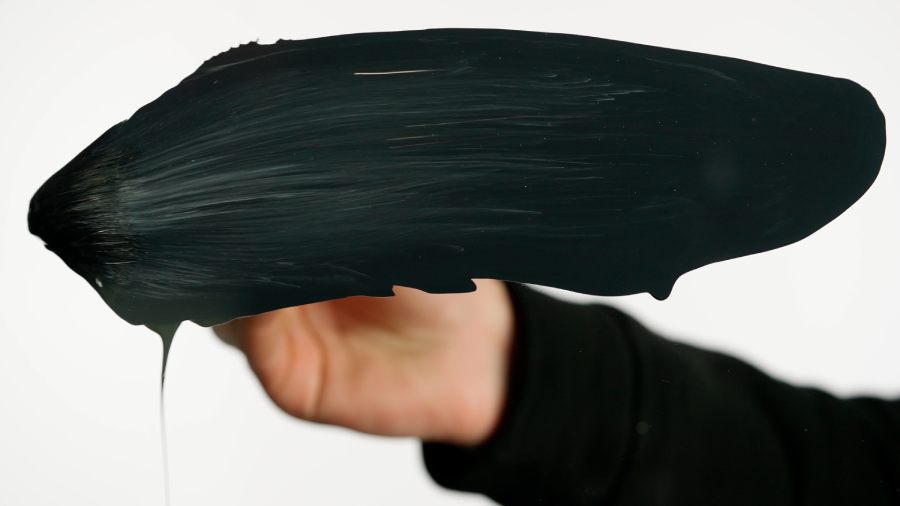
4. Epoxy paint
Epoxy paint is a two-part coating system consisting of resin and a hardener. It’s often used for garage floors and concrete surfaces, creating a hard, durable finish resistant to chemicals, oil, and gasoline.
The benefits of epoxy paint include exceptional durability and a seamless, easy-to-clean surface. It also offers resistance to stains and abrasions. It can help hide imperfections in concrete surfaces and comes in various colors and finishes. You can even customize it with decorative flakes or quartz.
There are some considerations when using epoxy paint. It requires careful surface preparation, and the application process can be more complex than other paint types. Proper ventilation is needed during application, and it may yellow when exposed to UV light. Epoxy paint is also not suitable for all surfaces.
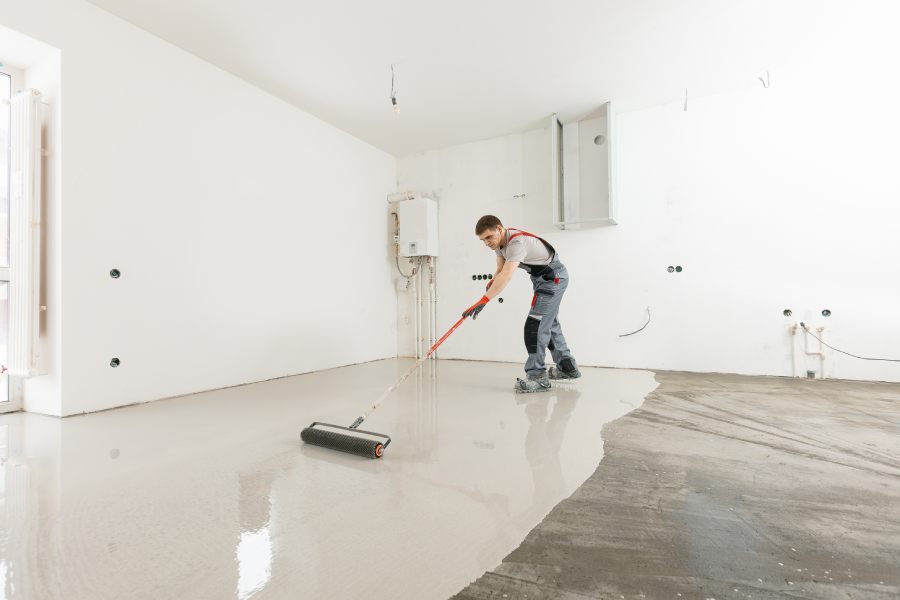
5. Enamel paint
Enamel paint is known for its hard, glossy finish and can be either oil-based or water-based. It’s often used for outdoor furniture and metal surfaces, providing excellent coverage and durability.
Enamel paint offers several benefits. It creates a smooth, glossy finish that’s highly durable and resistant to chipping. It’s easy to clean and maintains its appearance well.
Enamel paint comes in a wide range of colors and is suitable for both interior and exterior use, making it a versatile choice for various painting projects. It has strong adhesion properties, ensuring it bonds well to different surfaces.
However, keep in mind that oil-based enamel paints can take longer to dry and may emit stronger odors during application. For optimal results, always follow the manufacturer’s guidelines regarding surface preparation and application techniques.

Types of Exterior Paint Finishes
Flat finish
Flat finish is completely matte with no shine, making it ideal for hiding surface imperfections. This finish absorbs light, creating a smooth, uniform look often used on exterior walls. While flat finishes are easy to touch up and maintain, they can be harder to clean and show dirt more easily, requiring regular upkeep. They are less durable than other finishes, making them suitable for low-traffic areas.
Flat finishes are particularly favored for older homes, as they lend a classic, timeless aesthetic. However, their limited durability means they may need repainting more frequently than other finishes.
It’s essential to consider the climate when using flat finishes, as extreme weather can affect their longevity. Applying a primer before painting can enhance adhesion and improve the overall finish. Despite their drawbacks, flat finishes remain a popular choice for achieving a sophisticated and elegant look in outdoor spaces.
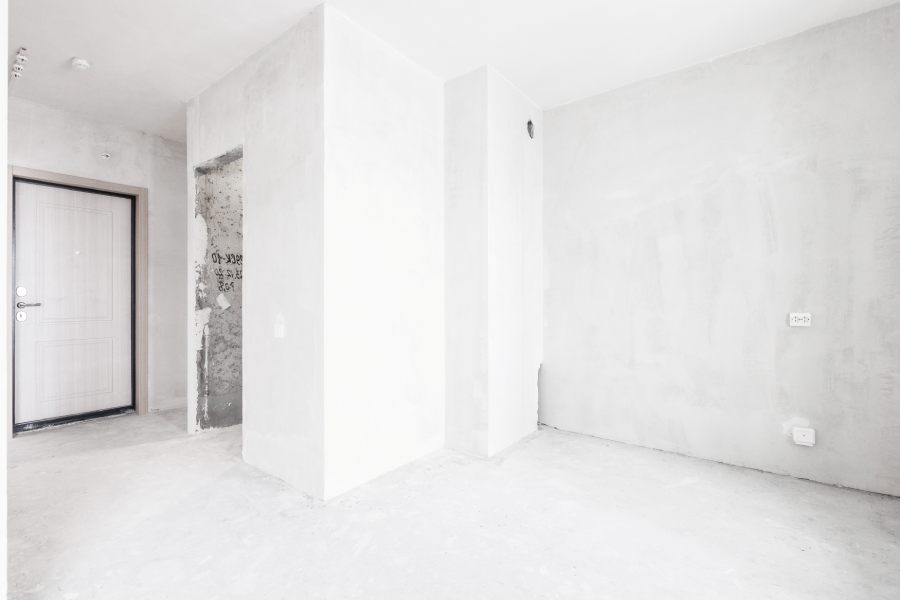
Satin finish
Satin finish offers a pearl-like sheen, striking a balance between flat and semi-gloss finishes. It is versatile, suitable for both walls and trim, and provides good coverage while hiding imperfections.
Satin finishes are easier to clean and resistant to dirt, making them ideal for high-traffic areas. However, they can highlight surface flaws, necessitating proper preparation, and may show brush strokes if not applied carefully. This finish is often chosen for family rooms and kitchens due to its durability and ease of maintenance.
Satin finishes offer a soft elegance that enhances the overall look of a space. They also provide a moderate level of reflectivity that can help brighten darker areas without being too overwhelming. Consider color choice with satin finishes for varied sheen accentuation. Satin finishes are popular for their blend of functionality and aesthetics in homes.
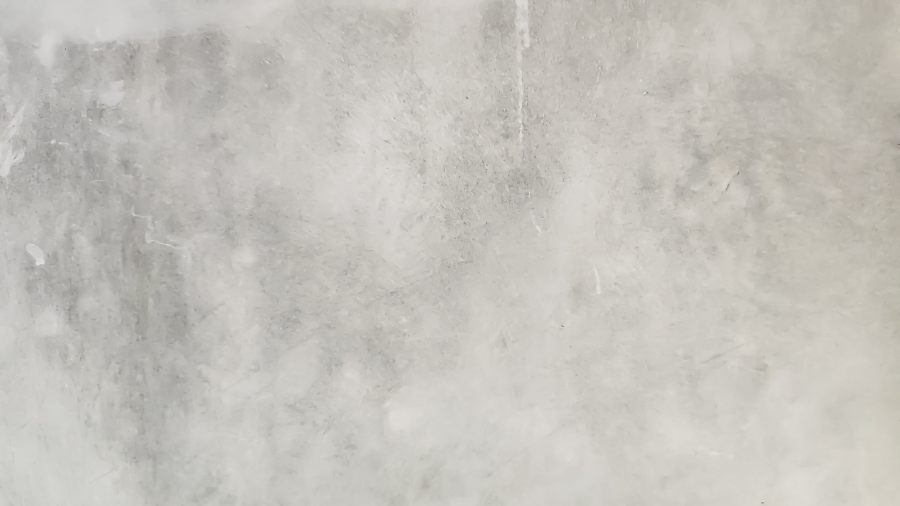
Gloss and textured finishes
Gloss finish is highly reflective, creating a durable and smooth surface ideal for doors and shutters. It is easy to clean and enhances color vibrancy but highlights imperfections, requiring meticulous surface preparation. Gloss finishes are particularly effective in areas exposed to moisture, as they resist staining and wear.
In contrast, textured finishes add depth and interest to walls with raised surfaces that effectively hide flaws and reduce the need for extensive prep work. However, this finish type can accumulate dirt and is harder to clean, making regular maintenance essential.
Textured finishes can also enhance the architectural style of a home, adding unique visual appeal. Yet, they may not be suitable for all surfaces, especially intricate trim or moldings.
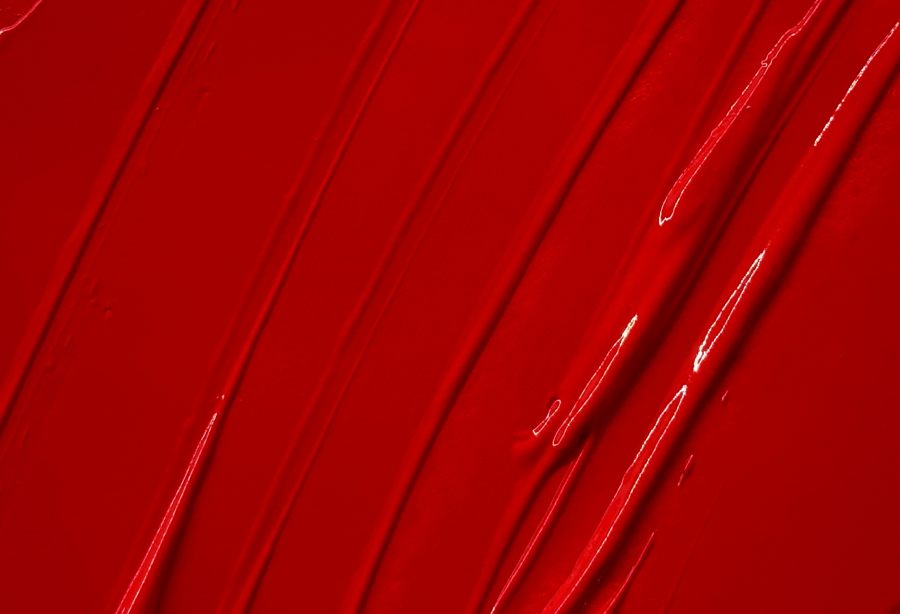
Conclusion
Understanding the various types of outdoor paint empowers you to make informed decisions for your specific needs. From versatile latex to durable oil-based paints and quick-drying acrylics, each type offers unique benefits for different surfaces and conditions.
Consider factors like durability, weather resistance, and ease of application when selecting. While innovations like low-VOC and self-cleaning formulations offer new possibilities, classic paint types remain reliable for most projects. Remember that proper surface preparation and application techniques are as important as paint choice.
By comprehending the strengths and limitations of each paint type, you can ensure a beautiful, long-lasting finish. This finish will protect and enhance your outdoor spaces for years to come.
